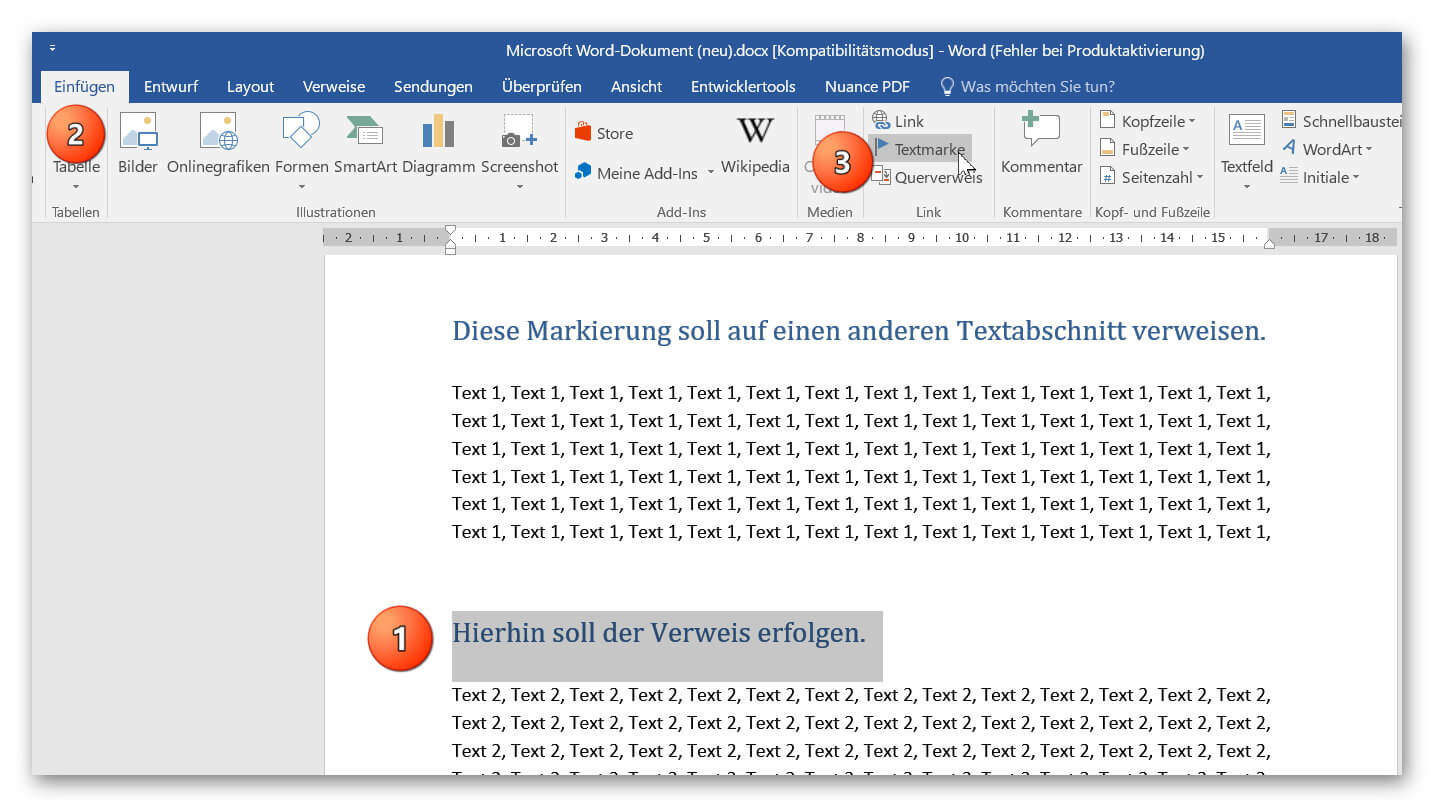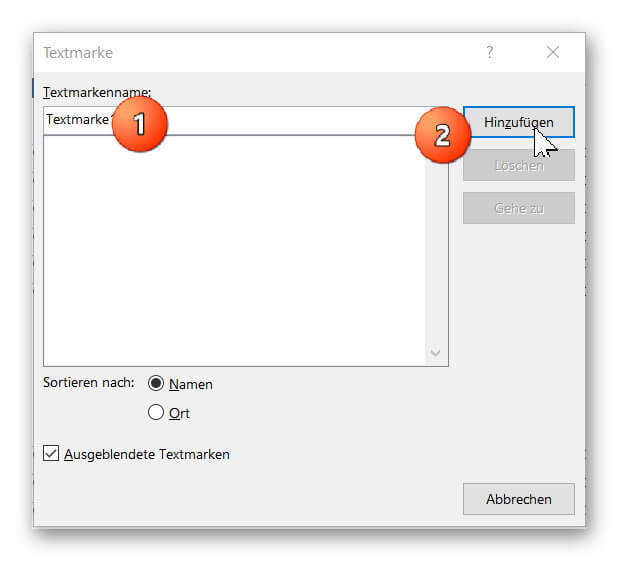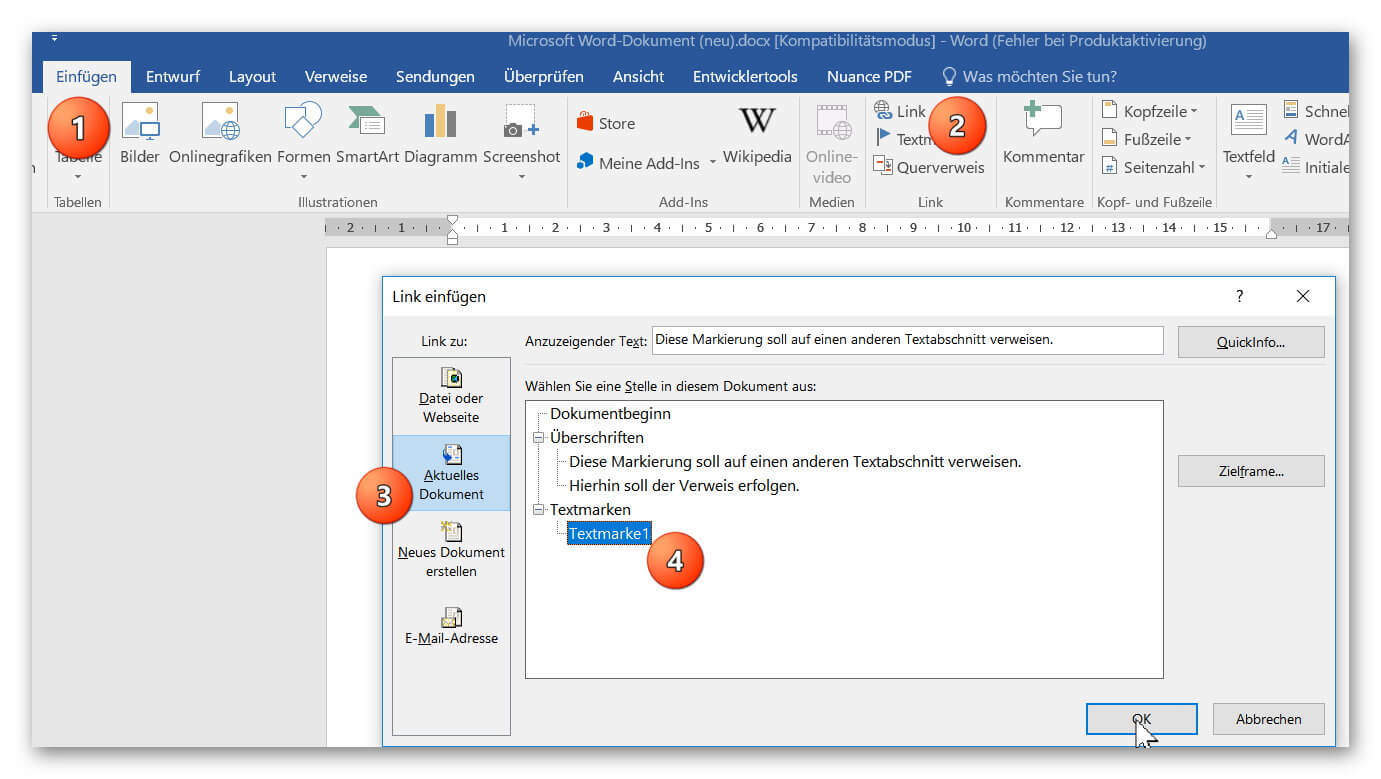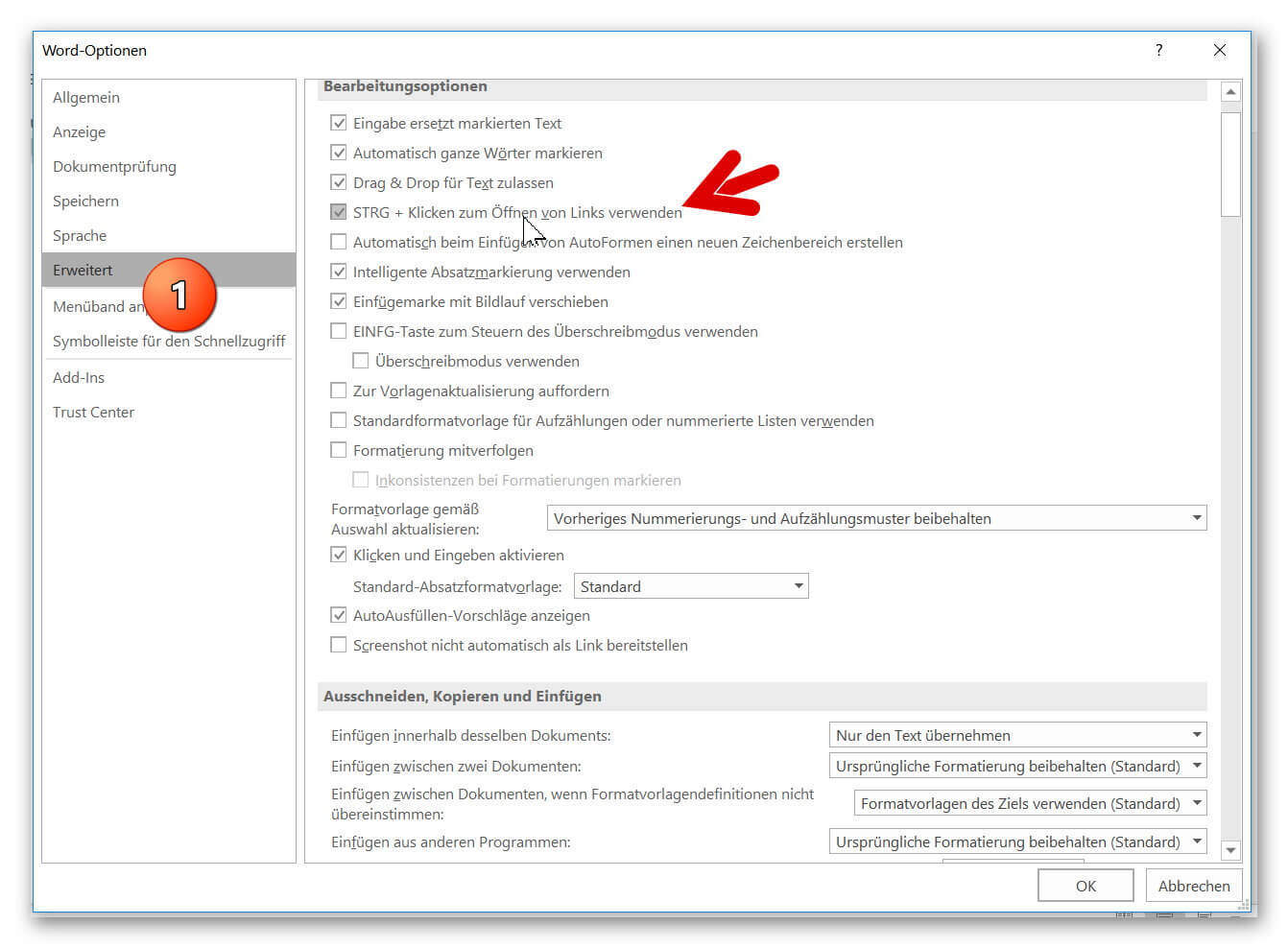Use bookmarks and cross-references in Word
Surely you’ve already thought about it, that in long Word documents it would not be practical to constantly scroll through textual pages to search for certain passages of text, but to move as comfortably as on a web page by clicking through your pages.
Fortunately, the solution to this problem is quite simple, and is based on the functionality of the table of contents in Word.
As it is done in Word 2016, and you can create such a dynamic document, you will find out in our article.

Use bookmarks and cross-references in Word
Surely you’ve already thought about it, that in long Word documents it would not be practical to constantly scroll through textual pages to search for certain passages of text, but to move as comfortably as on a web page by clicking through your pages.
Fortunately, the solution to this problem is quite simple, and is based on the functionality of the table of contents in Word.
As it is done in Word 2016, and you can create such a dynamic document, you will find out in our article.

1. Set bookmarks in Word
1. Set bookmarks in Word
In our small example, we have created 2 sections of text.
The goal should be that we can click on a section of text, or a word, and then land directly in the 2nd text section.
First, we set a text marker in the target section.
For this purpose we should mark the headline or the beginning of the section, and then go to the tab: “Paste” on “Bookmark” and give our bookmark a unique, and unique (if we later want to use more than one bookmark) name.
See picture: (click to enlarge)
In our small example, we have created 2 sections of text.
The goal should be that we can click on a section of text, or a word, and then land directly in the 2nd text section.
First, we set a text marker in the target section.
For this purpose we should mark the headline or the beginning of the section, and then go to the tab: “Paste” on “Bookmark” and give our bookmark a unique, and unique (if we later want to use more than one bookmark) name.
See picture: (click to enlarge)


2. Set internal links in Word.
2. Set internal links in Word.
In the previous step, we set our goal, where we want to land later.
Next we just have to define which text components should refer to this goal.
To do this, mark the word next, or the text section that represents the starting point, in the tab: “Paste” on “Link” and in the following dialog window select: “Link to: Current document”.
There, the desired text marker out, and confirm your choice with “OK”.
From now on, your document is dynamic and you can click on your internal link while holding down the CTRL key + left mouse button.
In this way, you can jump through a document by skillfully setting internal bookmarks and links without having to scroll through page by page text.
Of course, you can apply the same principle to images or shapes that you have inserted in your document.
See picture: (click to enlarge)
In the previous step, we set our goal, where we want to land later.
Next we just have to define which text components should refer to this goal.
To do this, mark the word next, or the text section that represents the starting point, in the tab: “Paste” on “Link” and in the following dialog window select: “Link to: Current document”.
There, the desired text marker out, and confirm your choice with “OK”.
From now on, your document is dynamic and you can click on your internal link while holding down the CTRL key + left mouse button.
In this way, you can jump through a document by skillfully setting internal bookmarks and links without having to scroll through page by page text.
Of course, you can apply the same principle to images or shapes that you have inserted in your document.
See picture:
3. Run link in Word directly
3. Run link in Word directly
By the way, you can only execute links in Word by using CTRL + Left mouse button. By the way, this is a security setting that Microsoft installed for a good reason and set as default.
Because as someone who did not create this document, I can assume that the link points to an expected point in the document, but I can not rely on it.
It is also quite possible that such a link to a self-executing exe. File refers to a dubious website or other harmful to my PC content.
Therefore, as soon as you move the mouse over the link, the destination of the link to the control is displayed in a small context window.
To override the default, and click through your document just as you would on an internet page, just go to the tab:
“File” – “Options” – “Advanced”
and look there in the section editing options the entry: “CTRL + click to open links”
and deactivate the hook there.
See picture: (click to enlarge)
By the way, you can only execute links in Word by using CTRL + Left mouse button. By the way, this is a security setting that Microsoft installed for a good reason and set as default.
Because as someone who did not create this document, I can assume that the link points to an expected point in the document, but I can not rely on it.
It is also quite possible that such a link to a self-executing exe. File refers to a dubious website or other harmful to my PC content.
Therefore, as soon as you move the mouse over the link, the destination of the link to the control is displayed in a small context window.
To override the default, and click through your document just as you would on an internet page, just go to the tab:
“File” – “Options” – “Advanced”
and look there in the section editing options the entry: “CTRL + click to open links”
and deactivate the hook there.
See picture: (click to enlarge)
Popular Posts:
Career booster 2026: These Microsoft Office skills will take you further!
A new year, new career opportunities! But which Office skills will really be in demand in 2026? "Skilled use" is no longer enough. We'll show you today's must-haves – like advanced Excel, using AI in the office, and relevant certifications for your resume.
Why Zero Trust doesn’t work without identity protection!
Zero Trust means: Trust no one, verify everyone. Identity protection is at the heart of this modern security model. Learn how IAM, MFA, Conditional Access, and the principle of least privilege effectively protect your business when the old network perimeter is gone.
How AI fuels cyberattacks – and how it protects us from them
Cybercriminals are using AI for deepfakes and automated attacks. Defenses are also relying on AI: through behavioral analysis (UEBA) and automated responses (SOAR). Learn how this arms race works and how modern security strategies can protect your business.
Information overload: Protection & tips against digital stress
Constantly online, overwhelmed by news, emails & social media? Digital information overload leads to stress and concentration problems. Learn the best strategies and practical tips to effectively protect yourself, manage the chaos, and regain your focus.
Put an end to password chaos: Why a password manager is important
Passwords are constantly being stolen through data leaks. A password manager is your digital vault. It creates and stores strong, unique passwords for every service. This effectively protects you against identity theft through "credential stuffing".
Stop procrastinating: How distraction blockers can help you regain focus
Constant digital distractions kill your productivity. Distraction blockers like Forest or Freedom help you regain focus. They specifically block distractions on your PC and mobile phone and use techniques like the Pomodoro Technique. This helps you stop procrastinating.
Popular Posts:
Career booster 2026: These Microsoft Office skills will take you further!
A new year, new career opportunities! But which Office skills will really be in demand in 2026? "Skilled use" is no longer enough. We'll show you today's must-haves – like advanced Excel, using AI in the office, and relevant certifications for your resume.
Why Zero Trust doesn’t work without identity protection!
Zero Trust means: Trust no one, verify everyone. Identity protection is at the heart of this modern security model. Learn how IAM, MFA, Conditional Access, and the principle of least privilege effectively protect your business when the old network perimeter is gone.
How AI fuels cyberattacks – and how it protects us from them
Cybercriminals are using AI for deepfakes and automated attacks. Defenses are also relying on AI: through behavioral analysis (UEBA) and automated responses (SOAR). Learn how this arms race works and how modern security strategies can protect your business.
Information overload: Protection & tips against digital stress
Constantly online, overwhelmed by news, emails & social media? Digital information overload leads to stress and concentration problems. Learn the best strategies and practical tips to effectively protect yourself, manage the chaos, and regain your focus.
Put an end to password chaos: Why a password manager is important
Passwords are constantly being stolen through data leaks. A password manager is your digital vault. It creates and stores strong, unique passwords for every service. This effectively protects you against identity theft through "credential stuffing".
Stop procrastinating: How distraction blockers can help you regain focus
Constant digital distractions kill your productivity. Distraction blockers like Forest or Freedom help you regain focus. They specifically block distractions on your PC and mobile phone and use techniques like the Pomodoro Technique. This helps you stop procrastinating.



































